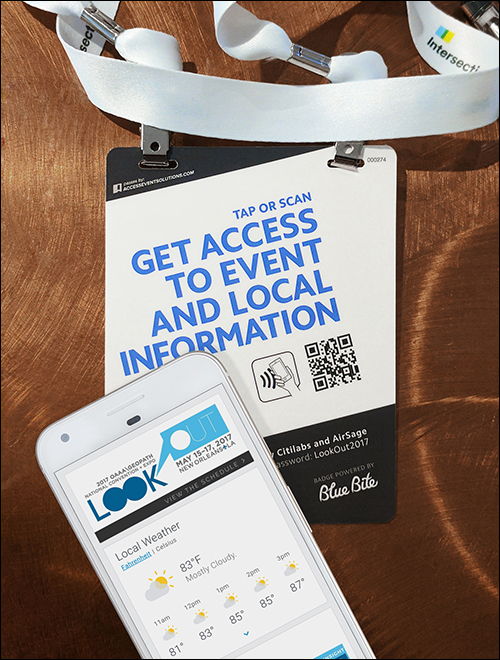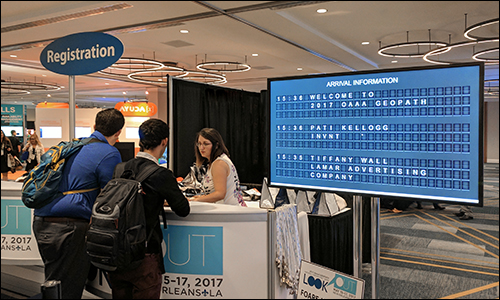Trade association Outdoor Advertising Association of America (OAAA) recently used a dual-frequency, Near Field Communication (NFC) and ultrahigh-frequency (UHF) radio frequency identification solution to provide attendees with personalized greetings as they entered the organization’s conference, held in New Orleans on May 15-17, as well as access to show-based content. The technology not only offered a “coolness” factor for guests, but also provided the OAAA with analytic information regarding traffic flows through its conference, so that it can better strategize the layout of show floors in the future.
Founded in 1891, the OAAA is the lead trade association that represents the out-of-home (OOH) advertising market. OOH advertising consists of the marketing provided to consumers in public places, such as billboards or displays in transportation or other gathering areas. As technology enables digital OOH advertising, the association has been interested in demonstrating new ways in which technology can provide advertising beyond billboards or signage.
The OAAA began working with event technology company ACCESS Event Solutions and digital experience engine firm Blue Bite to deploy a system at its annual trade show that would illustrate ways in which technology can enhance advertising. Blue Bite, in fact, is a member of the association, says Mikhail Damiani, Blue Bite’s CEO. “We wanted to create a surprise and delight experience for attendees,” he states. And while the OAAA wanted to include features that enable attendees to easily access data on their smartphones, it also wanted something that required no effort at all on the part of attendees.
The technology companies found that UHF and NFC RFID together provided the best solution, since neither technology required batteries in the badges. What’s more, each could provide precise interrogation—at the front entrance, for instance.
The system, designed earlier this year, consists of ACCESS Event Solutions’ smart badges with two embedded passive tags: a Smartrac Circus NFC tag with an NXP Semiconductors NTAG213 chip, and a Smartrac DogBone UHF RFID tag with a built-in Impinj Monza R6 chip for a longer read range to interact with onsite media screens. Users could deploy the NFC tag in the badge to interact with conference-based content using their own smart mobile devices. For those without Android phones, the badge also came with a printed QR code.
First, each attendee who signed up for the conference was provided with a smart badge. The unique ID numbers on the NFC and RFID tags were linked in the Blue Bite software to that individual’s name and company.
To use the NFC tag, attendees simply needed to have the NFC functionality turned on in their Android-based smartphone. They tapped their phone next to the NFC tag, which automatically prompted the phone to open the website, where they could access Blue Bite-managed content, including an event agenda and other conference materials, as well as locate weather reports and access social-media feeds. The system could also provide local information, such as area restaurants. No app was necessary to access that data.

Whether or not attendees used the NFC functionality, the badge provided a hands-free UHF RFID-based function. As each guest registered, as well as when he or she entered the conference show floor, an RFID reader interrogated his or her tag. The tag responded with its unique ID, which was linked to that individual’s name and company. That information was then displayed on a screen, so that visitors could be greeted personally upon their arrival. If multiple people walked through the RFID reader portal at the entrance simultaneously, their information was queued up in the software to display each name, in the order that the tags were read.
During the event, Damiani says, mobile engagement with the NFC-based data was at a rate of 3.4 percent, which he calls a reasonably positive result. Average mobile device or app interaction rates, he says, range from 1.5 to 2 percent. Of those who did opt to engage with the NFC-based data, 86 percent took a secondary action, such as selecting a prompt on the phone’s screen.
In the meantime, the RFID system provided the name of every individual who entered and left, averaging about 7.7 scans per badge and a total of 10,194 name listings. The software stored only the badge IDs, rather than the names, so that event managers could use the data to better understand traffic flow, without violating the technology users’ privacy.


